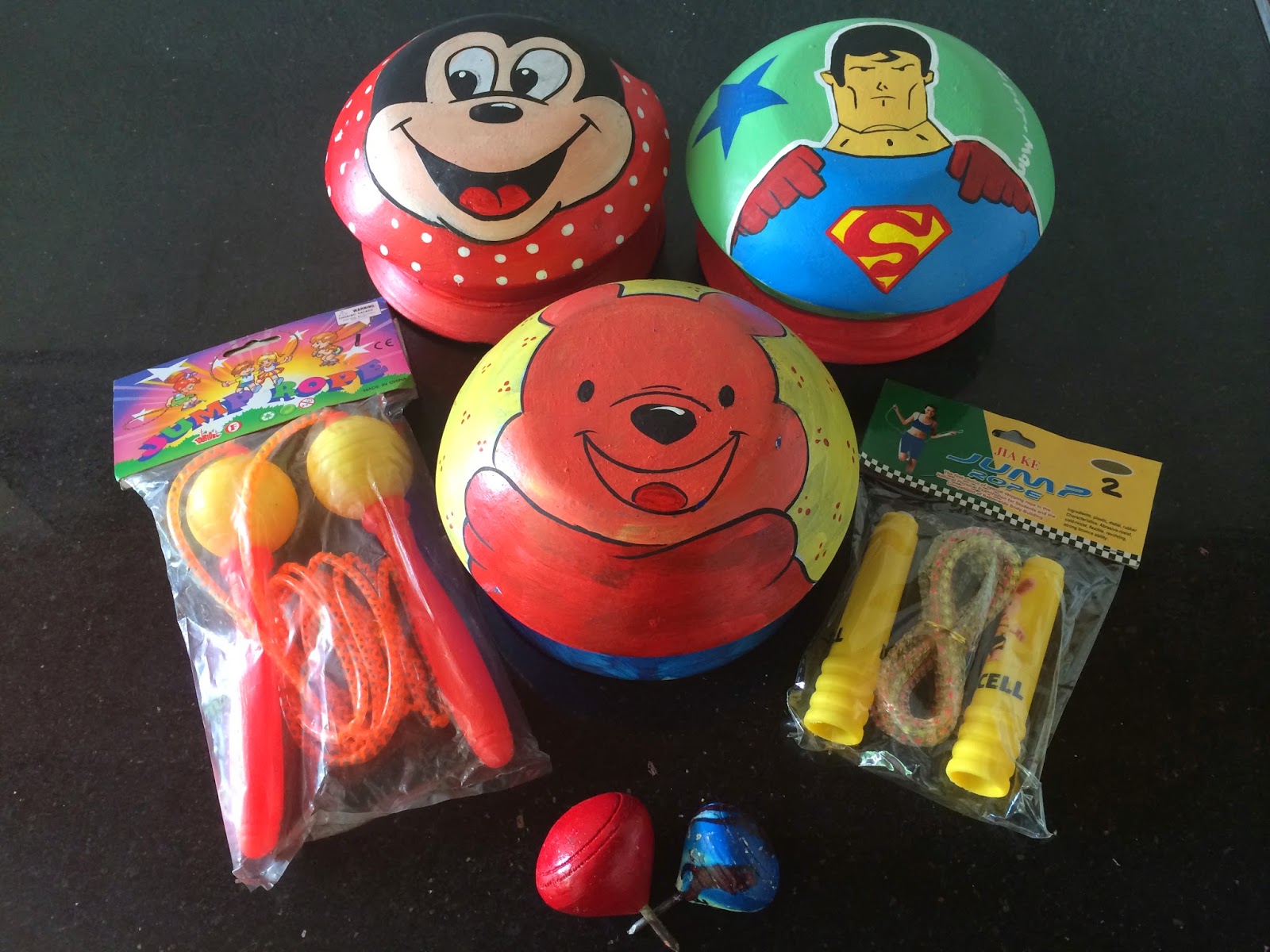EcoWaste Coalition Cautions Kids vs. Toxic Hazards in Some Traditional Games
Playthings with low or non-detectable lead (above) and with excessive levels of lead, arsenic and/or cadmium (below).
With the start of the summer
vacation, a toxics watchdog wasted no time in reminding kids to be extra
careful when playing with some native games that could potentially spell
trouble for their health and wellbeing.
As part of its advocacy towards chemical safety and zero waste, the
EcoWaste Coalition raised potential chemical hazards in some popular summer
games such as sipa, turumpo, holen and luksong lubid, and
provided some practical safety tips to minimize such risks.
“While we do encourage our kids to explore and enjoy traditional
games, we ask them to be on their guard against playthings laden with hazardous
substances like lead, a known developmental toxicant,” said Thony Dizon,
Coordinator of the EcoWaste Coalition’s Project Protect.
“These playthings, which form part of our rich cultural heritage,
used to be plain and simple. But, in this day and age, we find them in
varying materials, colors and chemical makeups,” he pointed out.
The EcoWaste Coalition issued the advisory after analyzing a total
of 350 samples of sipa, turumpo, holen, lubid and palayok
that it bought from vendors in Divisoria, Manila and screened for toxic metals
using an X-Ray Fluorescence (XRF) instrument.
Sipa, originally a rattan ball, is now often made
of lead flat washers that carpenters use to secure roof nails and with threads
of packaging straw on the hole. All 40 sipa samples were found to
contain lead, with each of the locally-made sipa with lead washers
having over 100,000 parts per million (ppm) of lead.
Turumpo, the cone-shaped whipping wooden toy, now
comes in a variety of colors. Unfortunately, the paints used to coat them
with attractive colors had lead. Out of 33 samples of painted tops, lead
exceeding the regulatory limit of 90 ppm was discovered in all but two of them,
with a yellow coated turumpo having 15,100 ppm of lead.
The lubid for skipping rope, which used to be made of abaca
fiber, is now made of plastic materials. One of the 3 samples analyzed
had lead: a rope made of polyvinyl chloride plastic with 4,134 ppm of lead.
While free of lead, the 271 pieces of holen or jolen were found
to contain either arsenic, cadmium or both. Cadmium up to 3,158 ppm was
detected in 170 marbles and arsenic up to 586 ppm was found in 196
marbles.
The palayok for fiesta’s hit-the-pot games use to be
unadorned claypot. Today we find them painted with cartoon figures like
Barney, Mickey Mouse and Superman. Fortunately, all three samples of
painted palayok had no detectable lead.
In view of the above findings, the EcoWaste Coalition advised kids
to:
1. Go for playthings made of indigenous materials such as
abaca rope for luksong lubid.
2. Pick playthings that are properly labeled, without lead
components and not coated with lead paint.
3. Wash hands thoroughly with soap and water after playing
and before eating.
Recognizing that kids would have no way of determining which ones
are safe from lead and other harmful chemicals, the EcoWaste Coalition appealed
to toy makers to unilaterally switch to non-toxic alternatives and embrace
clean production for truly child-friendly playthings.
The group also reminded toy makers to abide by the Chemical
Control Order for Lead and Lead Compounds issued by the Department of
Environment and Natural Resources last December that bans the use of lead in
the production of toys, and further sets a threshold limit of 90 parts per
million (ppm) for lead in paints.
The World Health Organization (WHO) has warned that “children are
particularly vulnerable to the neurotoxic effects of lead, and even relatively
low levels of exposure can cause serious and in some cases irreversible
neurological damage.”
According to a WHO factsheet, “children's brains and nervous
systems are more sensitive to the damaging effects of lead and may not be able
to repair the damage caused.”
“During his or her first years of life, a child's ability to
metabolize, detoxify, and excrete toxins differs from that of an adult, making
the child more susceptible to lead,” it said.
-end-
References:







Comments